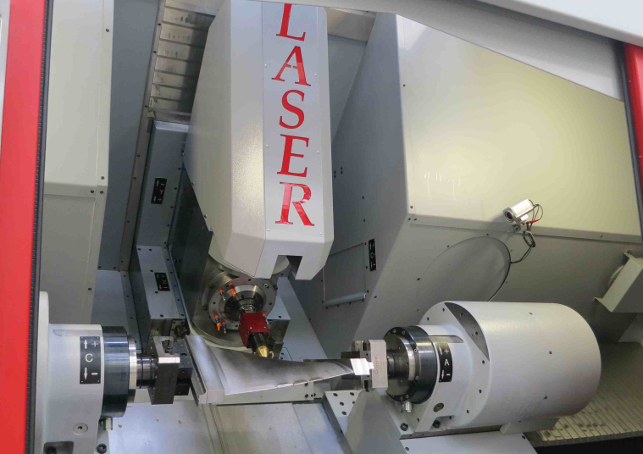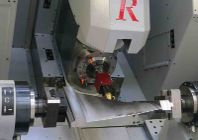
Combining additive and subtractive technologies, Hybrid machines like this one from Hamuel are seen by many as the Holy Grail of manufacturing
Labelling a product as ‘3-in-1’ or ‘multipurpose’ has not always inspired faith in customers that it will be equally proficient at all of the tasks it is expected to perform – yet sometimes combining everything you’ve got in a single machine can turn out for the best.
Hybrid CNC machines, designed to add metals 3D printing functions to other, more mature metrology and subtractive CNC milling technologies, are lighting up the manufacturing and maintenance worlds.
“Having everything in one machine in terms of metrology, the additive and the subtractive has benefit,” says Nathan Rogers, a senior consultant for Delcam Professional Services, the arm of the Delcam Group that offers consultancy and assistance to organisations needing to manufacture complex parts.
“You put the part on at the start and, by the end, you’ve got something that’s finished.”
Hybrid has appeals for those already working with metals 3D printing, he says, helping them to manufacture parts to tolerances or surface finishes that purely additive processes cannot match.
“Things have come a long way in the last few years. Additive has a nice advantage, in that you can make some shapes that you wouldn’t otherwise be able to manufacture – hollow components and stiffening structures inside things.”
The traditional machine tool manufacturers have sensed growing customer interest over the last five years and are responding by developing their own technologies. Those tempted to invest in a contained hybrid unit can find them available from big names like DMG Mori, Mazak and Hermle, while retrofitting existing CNC machinery cladding heads is another possibility.
Considering metrology
Hybrid’s lesser-considered strength is its use of metrology for inspecting parts, not simply at the beginning and end of a job, but during the build, too.
David Lovell, a Delcam Professional Services team consultant who has spent a lot of time working on real-world hybrid applications, suggests that having the metrology within the build chamber as a part ‘grows’ should mean fewer errors. “You want to make sure it all stacks up correctly, so it should be more accurate,” he explains.
Both Rogers and Lovell point out that the typical process for a part like a damaged jet engine blade first involves analysing the damage using a software like Delcam PowerInspect to identify the damaged areas and the nature of the damage.
From there, damaged material can be machined away, and the surface prepped for adding new material using PowerMill.
The same software can also take care of the additive side of things within a hybrid machine, controlling and plotting the toolpath for a laser cladding head the same as it would for a milling tool, before reverting to milling for profiling back the new material and finishing the part’s surface.
Tackling areas for which the geometry is a little bit simpler for the cladding process is pretty straightforward, something that is possible with existing PowerMill software and a little additional training.
Lovell points out that the more complex nature of hybrid machining comes to light when adding lattice-type structures, but that’s going to improve significantly with time, and is possible with PowerMill today.
Software considerations rarely run high on the list when assessing metals 3D printers; most users buy external software such as Materialise Magics to get a job done, before returning parts to standard CAM programmes for machining.
The ability to switch between additive, subtractive and even metrology functions within integrated software is another strong argument in favour of hybrid machines.
Not only might this eliminate the need for external printing software, but also reduce the costs involved in additional training and recruitment.
“Chances are they already have that ability. PowerMill’s got some neat tricks for being able to control some of the external elements of the cladding, the power and flow rates of the powder or wire,” says Rogers.
“The flipside is that we have an interest in finishing and polishing these components as well in a machine environment – a drive to remove hand-finishing.”
“That’s the Holy Grail: for people to have a surface-finished component come off the machine.”
Combining additive functions with metrology and subtractive CNC milling
Default






